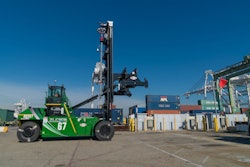
Carbon neutrality is becoming an increasingly important factor in the way businesses operate. Some of the world’s largest companies like Lyft, DHL, Ikea, BMW, John Deere and Daimler are making commitments to achieve carbon neutrality, and the trend is catching on throughout the supply chain.
When it comes to carbon neutrality, it’s very easy to get “tunnel-vision” and hone in on fleet operation, but there is a secret to carbon neutrality—everything counts. Every waste stream your operation produces is a source of carbon, both in its creation and disposal. Establishing a waste reduction and recycling plan is critical to achieving carbon neutrality for your operation.
Assuming you’ve already taken steps to make your fleet more carbon-friendly through technological advances like routing software, trailer tails and electronic tuning of trucks, what are the steps to carbon-neutrality that you’re missing?
The path to carbon neutrality
- Measure everything
With the mindset that every pound of waste translates to a carbon value, you need to track everything, not just the waste produced through manufacturing processes. Here are some examples of waste that manufacturers and fleet operators don’t often consider:
- Pallets. Pallets are a very common item in the shipping and logistics world, and although they are commonly re-used, what happens to them when they break? Typically, they end up in the dumpster. That’s perfectly good wooden material that can be recycled as biomass, for example.
- Packaging. Packaging materials from breaking down a pallet of goods, or excess material created when wrapping up pallets, all end up in a landfill unless you have a recycling program in place.
- Used oil. Fleet maintenance, a critical aspect of an operation, brings about used motor oil. Not all oil recycling programs are created equal, so make sure that however you choose to recycle motor oils is the best option for reducing your carbon footprint.
- Used oil filters. Used oil filters can be tricky to recycle depending on local regulations and the materials the filters are made of. Make sure that all recycling programs are not only in compliance with regulations, but also in line with your company’s carbon neutrality goals.
- Used fluids. Other waste fluids, such as antifreeze, brake fluid and transmission fluid all have specific regulations regarding how they can be disposed of. In many cases, these fluids are recyclable.
- Used tires. Tires make up a huge portion of a fleet’s waste stream. Traditional methods of tire disposal are extremely carbon-heavy. Finding the right recycling program that offsets this carbon will have an extremely positive effect on your environmental impact.
2. Utilize technology
Technology is constantly changing the way we conduct day-to-day business operations and can play a critical role in managing waste streams. If you want to achieve carbon neutrality, you have to start with how much carbon you produce. This is where using the right waste and recycling vendors is absolutely critical.
Without data on what you’re throwing away, you’ll never know where to start. Waste vendors need to be utilizing tracking systems to tell you exactly how much waste you’re producing and where it’s going. The key is to find vendors that offer that kind of transparency and accessibility to data. Working with a single vendor to handle all waste streams and recycling programs can be the differentiating factor between a managing a program with real insight and just another question mark on your carbon footprint.
3. Put the numbers to work
All the data collection in the world isn’t going to do you any good if you don’t apply it where it’s needed most. When asking the question of how to achieve carbon neutrality, the simple answer is often to “buy carbon credits.” That answer isn’t wrong, but it’s not 100% right either. An “average” ton of waste diverted from a landfill equals an estimated 2.5 metric tons of CO2 emission reduction. So, every ton recycled means less carbon credit needed to offset your carbon footprint. Carbon credits are a quick solution, but they are expensive. By reducing the total number of carbon credits you need, you save money twice—once when you reduce your waste and again when you use fewer carbon credits.
Another aspect of putting these numbers to work is sharing them. Communicate successes and weak spots from the C-suite to the investors. Consumers and shareholders alike need to know that they are putting money into a company that’s dedicated to making a difference.
The application of carbon-neutral practices not only allows your business to remain competitive, but it’s also an initiative that consumers and investors both seek. Aside from the obvious benefits to the environment, taking this “all waste-counts” mentality saves your business money in the long run. When you waste less, you spend less, and you look great doing it.


















